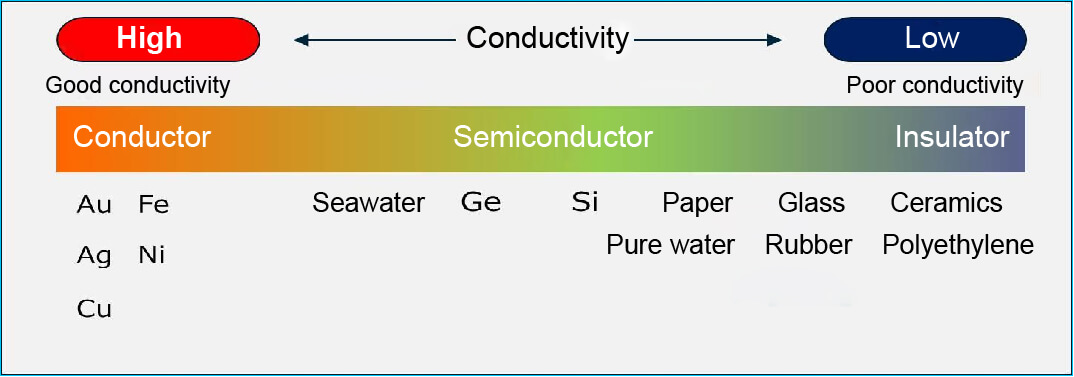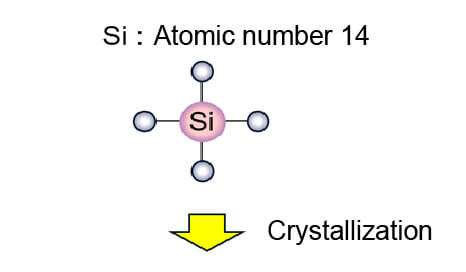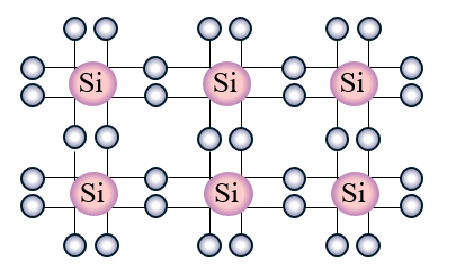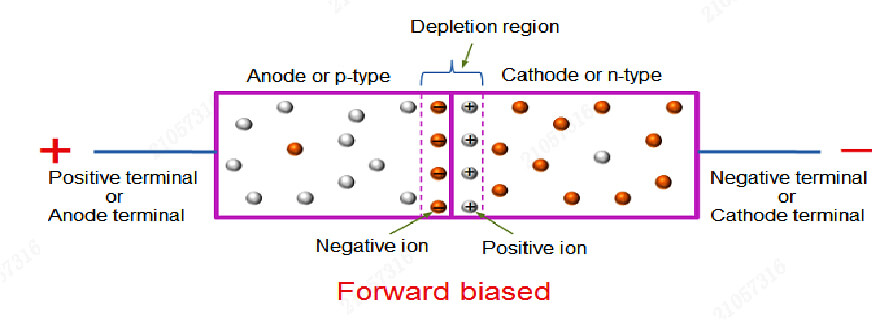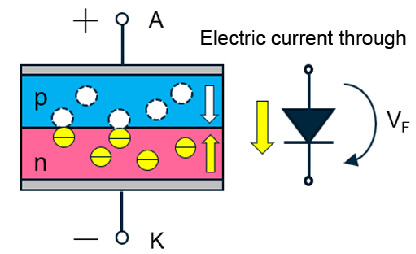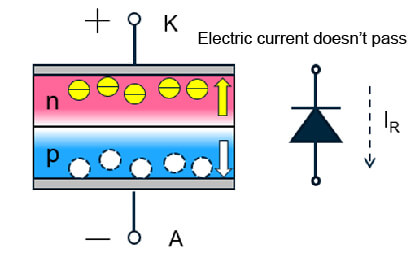Semiconductors are materials with conductivity between conductors and insulators and can change the current by properly controlling the application of an external electric field.
Semiconductor material-Si
The nucleus of silicon (Si) atoms carries 14 electrons, and the outermost orbit carries 4 electrons. It is formed into a single crystal and used as a material for semiconductor products.
The connection method is that the nuclei share electrons with each other, and 8 electrons are arranged around the nucleus. Pure single crystal silicon in this state is basically non-conductive. After adding some impurities here, current can pass through silicon.
Depending on the type of impurities, semiconductors are divided into p-type semiconductors and n-type semiconductors. In order to be used as electronic components, p-type and n-type junctions are made in a chip.
P-type semiconductor N-type semiconductor
Part of the Si atoms are replaced by atoms such as B (boron). This is a "vacancy" state without electrons. This vacancy is called a hole. In other words, there is no entity in the hole, also called a virtual particle.
Part of the Si atoms are replaced by atoms such as P (phosphorus). The form of this electron is in a "redundant" state. This is called a free electron. As long as the voltage is applied, it will be attracted to the + pole and become a state where it can move freely.
Schematic diagram of the internal structure of semiconductor material crystal
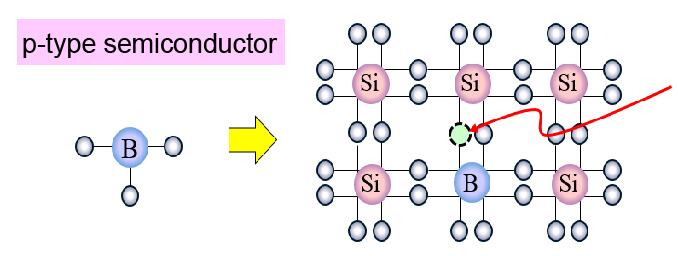
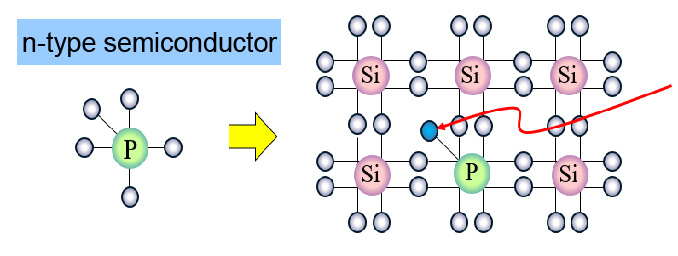
PN junction
PN junction has a unidirectional conduction characteristic, which is forward conduction and reverse cutoff.
The working principle of PN junction is that the direction of the electric field of the applied voltage is opposite to the direction of the electric field inside the PN junction. Under the action of the external electric field, the internal electric field will be weakened, making the barrier layer narrower and the diffusion movement enhanced. In this way, most carriers will continuously pass through the PN junction under the drive of the external electric field force, forming a large diffusion current, called forward current.
Semiconductor discrete devices
Semiconductor discrete devices refer to devices with a single function. Products manufactured to handle large currents or high power are called power semiconductors. Usually, those with a rated current of more than 1A are classified as power semiconductors.
Discrete devices
Discrete devices are another major product branch of semiconductors relative to integrated circuits.

Discrete devices appeared earlier than integrated circuits and can be divided into diodes, triodes, and three major passive components represented by capacitors/resistors/inductors. Power semiconductors are divided into power ICs and power devices. Power ICs are mainly power management analog ICs, and power devices mainly include power diodes, thyristors, power transistors and other types.
Among them, power transistors can also be subdivided into bipolar junction transistors (BJT), metal-oxide semiconductor field effect transistors (MOSFET) and insulated gate bipolar transistors (IGBT) and other types, which are mainly used in amplifiers, high-power semiconductor switches and inverters.
What is an example?
The working principle of the diode is mainly based on the unidirectional conductivity of the PN junction. When there is no external voltage, the diffusion current caused by the difference in carrier concentration on both sides of the PN junction and the drift current caused by the self-built electric field are equal and in a balanced state.
When there is a forward voltage bias in the outside world, the mutual cancellation of the external electric field and the self-built electric field increases the diffusion current of the carriers and causes the forward current. When there is a reverse voltage bias in the outside world, the external electric field and the self-built electric field are further strengthened, so that the diffusion current of the carriers is reduced, causing the directional current.
Static characteristics of diodes (conduction characteristics)
The static characteristics of diodes are mainly manifested in their volt-ampere characteristics, which reflect the relationship between the current and voltage of the diode under the action of a DC power supply.

Forward characteristics: When the forward voltage applied to the two ends of the diode exceeds a certain value, the diode begins to conduct. This voltage is called the threshold voltage or turn-on voltage, and this specific value is called the maximum forward DC current. After the diode is forward-conducted, the relationship between the voltage and current of the diode is roughly linear.
Reverse characteristics: When the reverse voltage applied to the two ends of the diode exceeds a certain value, the diode begins to enter the direction cut-off region. This voltage is called the breakdown voltage or cut-off voltage. In this area, even if the voltage increases, the current of the diode will remain at a very small value. This value is called the maximum reverse leakage current.
